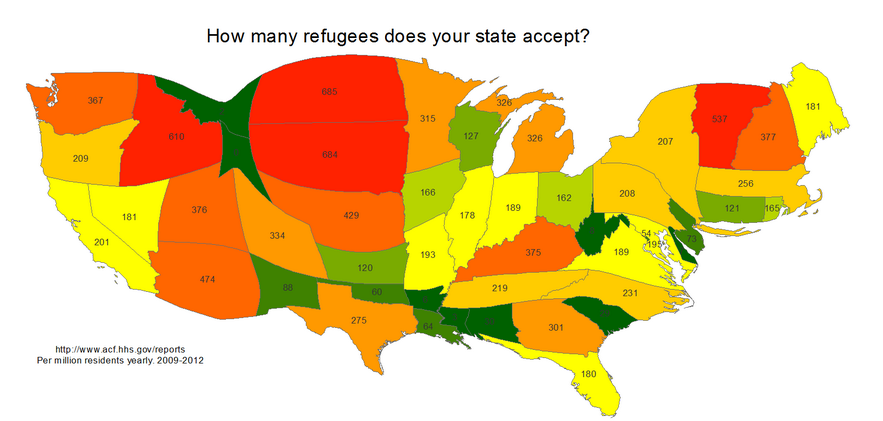Effective Intervention for Traumatized Refugee Children
Recognizing children's traumatic experiences, establishing rehabilitation mechanisms in schools and communities
Research Shows
- Schools can facilitate early intervention for traumatized refugee children.
- Trauma-related behavioral training programs help teachers recognize symptoms of traumatization.
- Combinations of cognitive-behavioral therapies (CBT) involving parents, teachers, and community aid rehabilitation.
The United States accepts more than 73,000 refugees each year, with children under age 18 accounting for 40% of the total (1;4). Society should understand these children’s past for many reasons. Many refugee children have witnessed and/or experienced political violence, war, and other traumatizing events, which causes high levels of anxiety and depression illnesses (1). Language barriers and insufficient access to mental health services make it difficult for these children to receive treatment. Schools are well positioned to take action (2). Teachers can empower refugee students by incorporating content-based lessons that encourage students’ self expression and language learning (2). Teachers need to know about the different triggers of trauma so they can create a safe environment for students to learn (2;1). Schools can support children and their families in ways critical to rehabilitating these children’s mental health (3).
Intended Audience
- School officials
- Teachers
- Advocates
Related Projects
Research Details
International and national studies have examined the effects of trauma for thousands of refugee children (1;3). Through field studies, scholars explore the need for trauma intervention in environments easily accessed by refugee and asylum-seeking children and families. Growing evidence suggests that refugee and asylum-seeking children who have experienced traumatic events would benefit most from trauma-focused therapy. With training, teachers are well positioned to tackle trauma-related issues, and to build trust and create a safe environment for students (2;1). Doing so can help refugee students to acculturate and integrate into their new community.
Continuing Debates
Due to refugees’ under-representation within the U.S. population, research about traumatized child refugees involves a relatively small number of subjects. Variation in the detailed circumstances affecting refugee groups presents its own challenges (1;5). There is no one-size-fits-all program that will aid in traumatized refugees’ rehabilitation. Interventions developed for a particular refugee population can be ineffective for a different group (5). Language and cultural differences between refugees and their receiving communities can create mistrust, especially when services are unavailable in the newcomers’ native languages or when their culture and values are not acknowledged properly (5).
Implications
Various cognitive-behavioral therapies (CBT), specifically verbal processing-based and creative art-based therapies, can realize a significant reduction in depression, anxiety, PTSD, anger, and conduct problems in traumatized refugee children (1;2;3). Teachers, especially in ELL classrooms, need to receive trauma-related behavioral training in order to modify their lesson plans and presentation methods to reduce further traumatization (2). Translators can bridge language barriers and psychologists can help connect children and their families, as they seek to heal from traumatizing events related to their displacement (2;3).
Potential Challenges
- Due to the complex nature of refugee trauma, teachers alone cannot and should not attempt to provide therapy, even with greater training (5;7).
- Teachers can only provide a safe environment for refugee students with aid from the entire school community (8).
- Well-documented examples of effective school programs were created in urban and suburban settings only. Compared to these programs, rural schools may not have the same access to resources related to language or religion.
Sources and Further Reading
1. Betancourt, T. S., E. A. Newnham , C. M. Layne, S. Kim, A. M. Steinberg, H. Ellis, & D. Birman. 2012. “Trauma History and Psychopathology in War-affected Refugee Children Referred for Trauma-related Mental Health Services in the United States.” Journal of Traumatic Stress 25, no.6: 682-690. Accessed June 1, 2015. http://dx.doi.org/10.1002/jts.21749
2. Medley, Michael. 2012. “A Role for English Language Teachers in Trauma Healing.” TESOL Journal 3, no. 1: 110-125. Accessed June 1, 2015. http://dx.doi.org/10.1002/tesj.6
3. Tyrer, Rebecca A. and Mina Fazel. 2014. “School and Community-based Interventions for Refugee and Asylum-seeking Children: A Systematic Review.” PLOS ONE 9, no. 2. Accessed June 1, 2015. http://dx.doi.org/10.1371/journal.pone.0089359
4. Baier, Elizabeth. 2014. “Growing Karen Population Brings New Round of Changes to Austin, Minnesota.” MPR News, September 2014. http://www.mprnews.org/story/2014/09/15/austin-karen-refugees
5. Birman, D., S. Beehler, E. M. Harris, M. L. Everson, K. Batia, J. Liautaud, S. Frazier, M. Atkins, S. Blanton, J. Buwalda, L. Fogg, & E. Cappella. 2008. “International Family, Adult, and Child Enhancement Services (FACES): A Community-based Comprehensive Services Model for Refugee Children in Resettlement.” American Journal of Orthopsychiatry 78, no.1: 121-132. Accessed June 1, 2015. http://dx.doi.org/10.1037/0002-9432.78.1.121
6. The Victorian Foundation for Survivors of Torture Incorporation. 2000. “The Rainbow Program for Children in Refugee Families.” Gill Miller Press. http://www.foundationhouse.org.au/wp-content/uploads/2014/07/RainbowProgram.pdf
7. Ellis, B. Heidi, Kate Murray, and Colleen Barrett. 2013. “Understanding the Mental Health of Refugees: Trauma, Stress, and the Cultural Context.” In The Massachusetts General Hospital Textbook on Diversity and Cultural Sensitivity in Mental Health, edited by Ranna Parekh, 165-87. New York: Springer. Accessed June 3, 2015. http://dx.doi.org/10.1007/978-1-4614-8918-4_7
8. Beehler, Sarah, Dina Birman, and Ruth Campbell. 2012. “The Effectiveness of Cultural Adjustment and Trauma Services (CATS): Generating Practice-Based Evidence on a Comprehensive, School-Based Mental Health Intervention for Immigrant Youth.” American Journal of Community Psychology 50: no. 1-2: 155-168. Accessed June 1, 2015. http://dx.doi.org/10.1007/s10464-011-9486-2
Authors
Jenny Ortiz and Dahir Wako